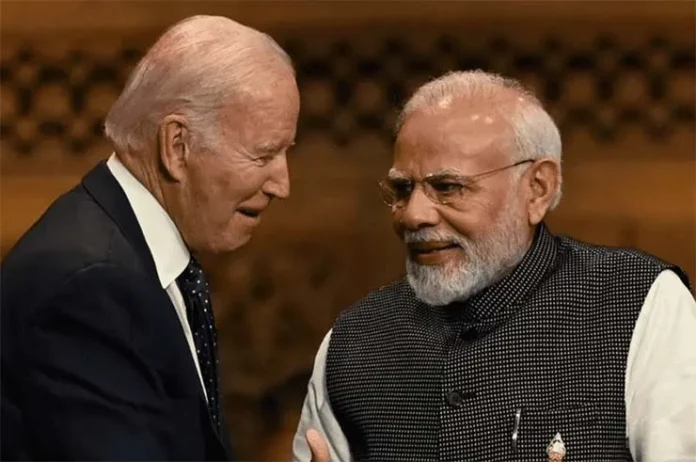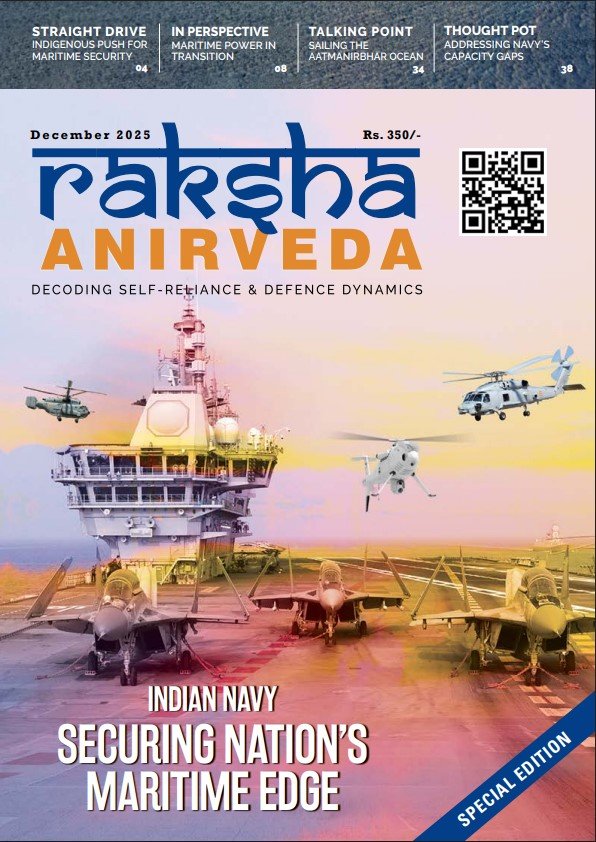Amid a shifting and increasingly competitive global landscape, technology cooperation has emerged as a vital component of the United States–India strategic partnership. In May 2022, the two countries announced the US-India Initiative on Critical and Emerging Technology (iCET), which was launched in January 2023. Over the last year and a half, governments, businesses, and academic institutions have expanded cooperation in both the civilian and defence arenas.
Hudson Institute organised a panel discussion on what role technology will play in deepening the US-India relationship with Ambassador Sripriya Ranganathan, Carnegie India Director Rudra Chaudhuri, Carnegie India Fellow Konark Bhandari, United States Institute of Peace Senior Fellow Daniel Markey, United States India Strategic Partnership Forum Senior Advisor Vikram Singh, and Center for New American Security Senior Fellow Lisa Curtis, taking part in the discussion. Hudson Institute’s Aparna Pande moderated the conversation.
Ambassador Sripriya Ranganathan kicking-off the conversation said that Indian investments in US currently stands at about 40 billion dollars with half-a-million jobs created by about 200 Indian investors. Similarly, in India the US companies have invested about 63 billion dollars and every major US tech company is present in India.
Ambassador Ranganathan further said that after 15 months of the launch of iCET, tangible success has been made in different fields like semiconductors, telecommunications and AI. And more importantly we are turning to each other to seek solutions to the challenges and issues, which have been identified us necessary to underpin the increasing cooperation between the two nations.
She said that technology, of course underpins collaboration in every field, if we take defence as an example then we have moved to a relationship, which is based on co-development and co-production. The most high profile development in this sector was in June last year, when GE-HAL deal was announced, meaning GE 414 engines will be made in India, soon. Similarly MQ-9B is another transformative deal.
Indian investments in US currently stands at about 40 billion dollars with half-a-million jobs created by about 200 Indian investors
At the more broad-based level if we take into account the different military exercises in which both the nations participate, are part of the shift that has taken place to bring some of the smaller companies in action in terms of exposure. She further added that another area of cooperation is space and currently we are working on a human space flight mission.
Lisa Curtis, Senior Fellow at the Center for New American Security said that our two countries share technology values that emphasise both a culture of innovation but also rules which place human values and human dignity at the centre of our AI, cyber, defence and protecting critical infrastructure initiatives, this is because our two countries share technology values both as a culture of innovation but also place humanity and progress at the centre of our AI research and development.
Ms Curtis further said that both our nations want to harness the AI for the benefit of the society. She said, “However, one note of caution which I may raise when we talk about enhanced technology cooperation in the defence sector, then I might say that continued reliance of India on Russian military technology will definitely impact the US-India defence ties going forward, though India seems confident that it may segment its relations with both the countries, and it may put firewalls that may safeguard the American technology but the US will remain cautious and reluctant to link its security networks to Indian platforms and share sensitive defence information.” Commenting on the US-India tech cooperation Lisa expressed hope that this continued cooperation my get a boost when we see a second Trump administration.
Carnegie India Director, Rudra Chaudhari was of the view that at the moment there are two sets of interrelated imperatives, one is internal to India and the other is the geo-political. On the internal side there is a verve in India which is moving the country in every which direction to access hi-tech, co-produce and co-develop in India. So in both private sector and at governmental level there is a very clear understanding to move to the path of co-manufacturing.
Ambassador Ranganathan further said that after 15 months of the launch of iCET, tangible success has been made in different fields like semiconductors, telecommunications and AI
Rudra further added that in the last ten years the government has done much internally to deregulate the space in strategic technology to thrive, for example the so far controlled sectors, like space, which has led to the mushrooming of hundreds of startups and MSMEs in India, of which at least a dozen have serious capabilities. There is a consensus that the US-India Strategic relationship is the most consequential one for India. At the moment iCET is an opportunity in the background of China’s relations with the US, India and Russia, each with its own set of challenges and dynamics. Rudra further said that iCET works both for India and the US and the real challenge would be how to develop into a more fruitful cooperation between the two countries, the one that has already started to show positive results.
Carnegie India Fellow Konark Bhandari was of the view that the GoI has realised that we need to have some space-based system to monitor our defences. As far as iCET matters, the US has also realised that it needs a partner with skills and who could offer services at scale and volume. GoI has realised that it needs to have much more space-based assets.
Additionally for US also, it works to its advantage as it wants to have a partner, which could co-develop, at cost and at scale. Space according to him is a low hanging fruit hanging for increased cooperation between the two countries. As far as semiconductors are concerned, India does not have a very strong domestic ecosystem though we have a strong chip development facility, but that too is not home grown. So the way forward is that there should be an alignment of priorities as well in the semiconductor sector, as India is not looking for advanced node production but mature node production, and that is an area where the US has let India play its role.
The most high profile development in the defence sector was in June last year, when GE-HAL deal was announced, meaning GE 414 engines will be made in India, soon. Similarly MQ-9B is another transformative deal
United States India Strategic Partnership Forum Senior Advisor Vikram Singh, was of the view the US has not decided to share its most advanced defence technology with India. However, there are areas like Quantum, AI and semiconductors where agreements like iCET can work wonders, as there is a realisation that we have to make things happen, make things work.
United States Institute of Peace Senior Fellow Daniel Markey commented that we are at a position where both sides understands the centrality of this competition and realise that there lies the key to success at a broader societal level, too.
From the US perspective, it understands that India brings scale, a labour pool and all kinds of other opportunities and from the Indian side, the United States brings in the existing technological capabilities and capital to that story. But we also need to ask whether we have the right sized expectations from this partnership, what are the practical limits to our technological cooperation, are we thinking realistically about scale, speed, and the kind of sophistication levels of technologies we aim to cooperate in or are we aiming for the fences. Further we also need to assess the scale to which India could fill the gap if US decouples from China?
USIP’s Senior Fellow Daniel Markey commented that we are at a position where both sides understands the centrality of this competition and realise that there lies the key to success at a broader societal level, too
Dan further added that it is also necessary to understand what United States expects from India as compared to its other allies and partners. As it is essential to avoid the kind of frustrations or backlash that will come if we (the US) under deliver on our promises. Further what is the set of convergence between the US and India regarding technological values. In the US most advancement are led by and therefore policy decisions are influenced by the private sector, where as in India it is the state which leads on both sides, so we have to evolve a system which satisfies both the partners.
To listen to the full conversation, kindly visit: https://www.youtube.com/live/68xT2K8lRBc?si=NSYTvKfqiqlsgQbM





